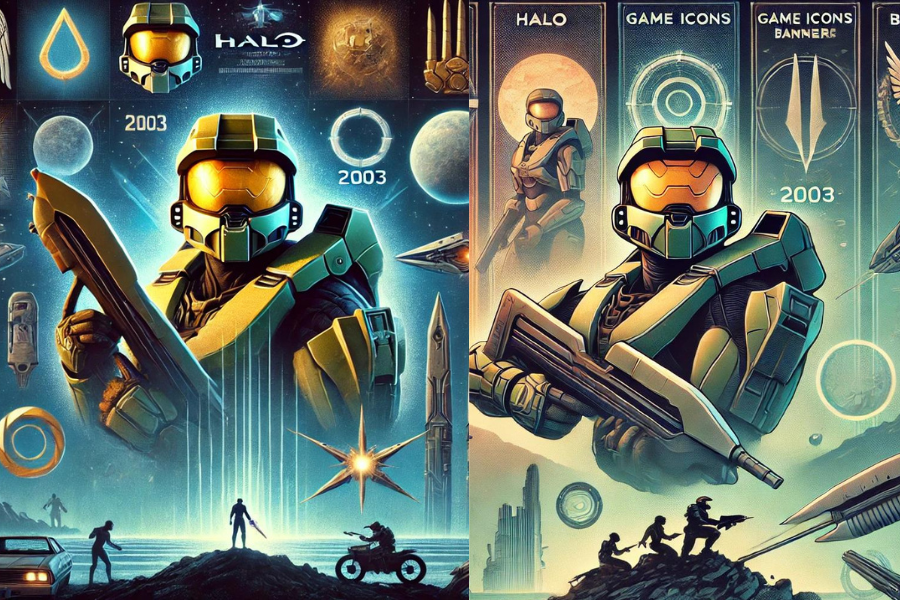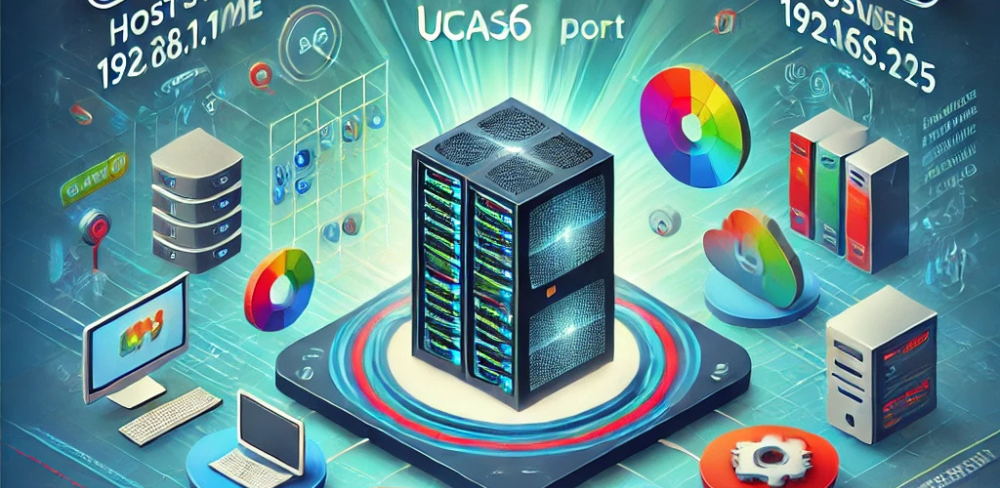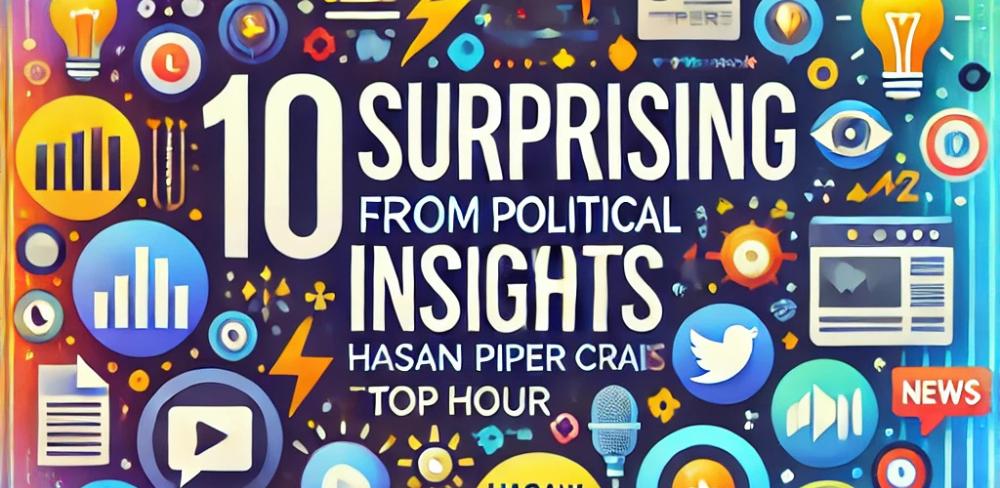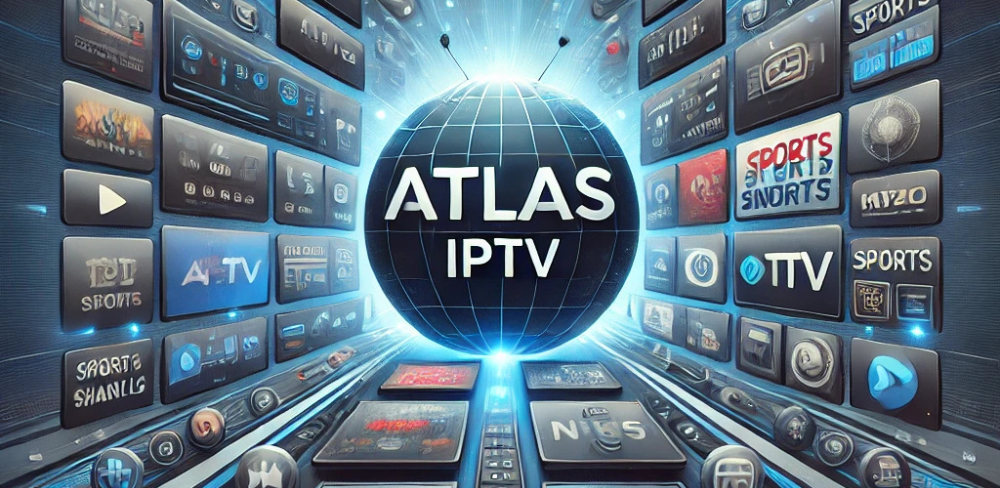In 2001, Bungie Studios revolutionized the gaming world with the release of “Halo: Combat Evolved” for the Xbox gaming system. This iconic first-person shooter not only redefined the genre but also introduced some of the most recognizable symbols in video game history. “Halo (2003) game icons banners” have become synonymous with the franchise, leaving a lasting impression on gaming culture and beyond. In this article, we will explore the evolution of these icons, their impact on the gaming industry, and their enduring legacy.
Key Takeaways
- Halo (2003) game icons banners are integral to the visual identity of the Halo franchise.
- The imagery introduced in Halo has influenced the marketing and promotion of video games worldwide.
- These symbols have become cultural icons, representing not just the game but the broader gaming community.
The Birth of Halo and Its Iconography
Halo: Combat Evolved, released in 2001, was more than just a game; it was a cultural phenomenon that set new standards in the gaming industry. The year 2003 saw the franchise solidify its iconic status with the release of Halo 2, which further popularized the series and its imagery.
Master Chief: The Iconic Hero
At the heart of Halo’s imagery is Master Chief, the super-soldier clad in green armor, who quickly became a symbol of heroism and resilience. His design, with the imposing helmet and reflective visor, has been plastered across countless banners, posters, and game covers since 2003. Master Chief’s image has transcended the game itself, becoming a symbol of gaming excellence and the face of the Xbox brand.
The Halo Rings: Symbols of Mystery and Power
The titular Halo rings are another crucial element of the franchise’s iconography. These massive, ring-shaped structures, which house entire ecosystems, are central to the game’s narrative. They are depicted in numerous banners and promotional materials, often shrouded in mystery and danger. The visual representation of the Halo rings has become a staple in science fiction, inspiring similar designs in other media.
Weapons of War: The Energy Sword and Assault Rifle
The Energy Sword and Assault Rifle are two weapons that have become instantly recognizable to fans of the series. These weapons are not just tools of destruction but also key elements of the game’s aesthetic. The Energy Sword, with its glowing blue blades, and the Assault Rifle, with its sleek, functional design, have both been featured prominently in Halo (2003) Game Icons Banners, adding to the game’s distinctive visual language.
The Evolution of Halo (2003) Game Icons Banners
As the Halo series grew, so did the complexity and sophistication of its visual branding. The “Halo (2003) game icons banners” evolved from simple promotional tools to intricate representations of the game’s rich universe.
The Role of Icons in Game Branding
Icons play a crucial role in the branding of video games, serving as a visual shorthand for the game’s themes, characters, and world. In the case of Halo, the icons used in promotional materials, in-game menus, and online platforms have helped to establish a consistent and recognizable brand identity.
- Consistency Across Titles: The use of consistent iconography across different Halo titles has helped to reinforce the franchise’s identity. The symbols associated with Halo, such as the UNSC logo, Covenant symbols, and Forerunner glyphs, are used repeatedly in Halo (2003) Game Icons Banners interfaces, creating a cohesive visual experience for players.
- Fan Engagement: The evolution of Halo’s icons and banners has also been driven by fan engagement. Bungie and later 343 Industries have embraced fan-created content, incorporating community feedback into the design of new icons and banners. This collaborative approach has helped to keep the franchise’s visual identity fresh and relevant.
Banners as Marketing Tools
Banners have been a critical marketing tool for the Halo franchise, helping to generate excitement and anticipation for new releases.
- Pre-release Hype: Before the release of a new Halo game, banners featuring key characters and scenes are prominently displayed on gaming websites, social media platforms, and retail stores. These banners often feature Master Chief, iconic weapons, and the Halo rings, serving as a visual reminder of the franchise’s legacy.
- Event Promotions: Halo-themed events, such as tournaments, conventions, and special in-game events, are often accompanied by custom banners that highlight the event’s unique content. These banners not only promote the event but also serve as collectibles for fans, further deepening their connection to the franchise.
Cultural Impact of Halo (2003) Game Icons Banners Visual Aesthetics
The visual aesthetics of Halo, particularly its icons and banners, have had a profound impact on gaming culture and beyond.
Influence on Other Media
The success of Halo’s visual design has inspired countless other games, movies, and television shows. The design of the Halo rings and the visual representation of advanced technology in the game have influenced the aesthetics of other science fiction properties, from blockbuster films to indie games.
- Imitation and Homage: Many games and media franchises have paid homage to Halo’s iconic imagery, incorporating similar designs and visual motifs. This is a testament to the franchise’s enduring influence on the broader world of science fiction and gaming.
Fan-Created Content and Community Engagement
The Halo community has played a significant role in the evolution of the game’s visual identity. Fans have created thousands of fan arts, mods, and cosplay designs that celebrate the game’s iconic imagery. These creations are often shared on social media platforms and fan forums, further spreading the influence of Halo’s visual language.
- Community Events: Fan conventions and gaming events often feature banners and icons inspired by Halo, showcasing the creativity and passion of the community. These events help to keep the franchise alive and thriving, even as new games are released.
Legacy of Halo (2003) Game Icons Banners
As we look back on the legacy of Halo (2003) game icons banners, it’s clear that they have played a crucial role in the franchise’s success.
Enduring Appeal
The appeal of Halo’s icons and banners has not diminished over time. Even as the gaming industry has evolved, the imagery associated with Halo remains as powerful and evocative as ever.
- Nostalgia Factor: For many gamers, the Halo (2003) Game Icons Banners from the early 2000s evoke a sense of nostalgia, reminding them of the excitement and wonder they felt when they first played Halo. This nostalgia has helped to keep the franchise relevant, even as newer games have come and gone.
- Continued Relevance: The visual language of Halo continues to evolve, with each new game adding to the franchise’s rich tapestry of imagery. However, the core elements—the Master Chief, the Halo rings, and the iconic weapons—remain as central to the franchise’s identity as they were in 2003.
Influence on the Gaming Industry
Halo’s success has had a ripple effect throughout the gaming industry, influencing everything from game design to marketing strategies.
- Standardization of Visual Branding: The success of Halo’s visual branding has led other game developers to adopt similar strategies, emphasizing the importance of consistent and recognizable imagery in promoting their games.
- Innovations in Game Design: Halo’s influence extends beyond its visual aesthetics. The game’s design, mechanics, and storytelling have set new standards for the industry, inspiring countless other games in the process.
FAQs About Halo (2003) Game Icons Banners
1. What are the most iconic images from the Halo (2003) Game Icons Banners?
- The most iconic images include Master Chief in his green armor, the Halo rings, and the Energy Sword.
2. How did Halo’s icons influence the gaming industry?
- Halo’s icons set a new standard for visual branding in video games, influencing marketing strategies and game design across the industry.
3. Why are Halo’s banners important in its marketing?
- Halo’s banners have been used to generate excitement and anticipation for new releases, becoming key elements of the franchise’s marketing strategy.
4. How has the Halo community contributed to its visual identity?
- The Halo community has created fan art, mods, and cosplay designs that celebrate and expand upon the game’s iconic imagery.
5. What is the legacy of Halo’s visual aesthetics?
- Halo’s visual aesthetics have left a lasting impact on gaming culture, inspiring other media and creating a sense of nostalgia among fans.
Conclusion of Halo (2003) Game Icons Banners
Halo (2003) game icons banners are more than just promotional tools; they are symbols of a franchise that has left an indelible mark on the gaming industry. From the stoic visage of Master Chief to the mysterious Halo rings, these images have become part of the cultural fabric of gaming. As the franchise continues to evolve, these iconic visuals will remain central to its identity, reminding fans of the legacy that began with a simple green helmet and a ring in the sky.
Read More: Halo (2003) game icons banners




